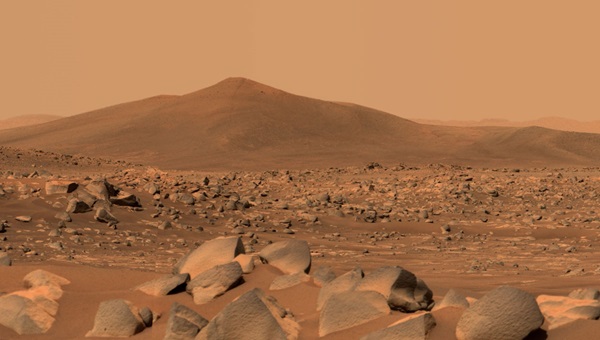Cambridge Quantum, a leader quantum software, and Honeywell Quantum, a leader in trapped ion quantum hardware, have merged. The new company, which will be formally named in due course, will have a long-term agreement with Honeywell to help manufacture the critical ion traps needed to power the quantum hardware. Honeywell will invest between US$270million to US$300 million in the new company. This company and IonQ are the best-funded players in the quantum computing industry. Both have hundreds of millions in funding. This company likely has about a $1 billion valuation while IonQ will have $2 billion.
Founded in 2014, Cambridge Quantum has assembled the industry’s largest scientific team in quantum algorithms and software to achieve major advances in cybersecurity, finance, drug discovery, materials science, optimization, quantum machine learning, natural language processing and more. Cambridge Quantum will continue its presence and expand its software and algorithm development team in the UK, with offices in Cambridge, London and Oxford, and overseas in the USA (Washington), Germany and Japan. CQ will operate with no change to its globally recognized brand.
Honeywell began its quantum computer development program a decade ago and uses trapped-ion technology that uses charged atoms to hold quantum information. The Honeywell System Model H1 consistently achieves the highest quantum volume – a comprehensive performance measurement used widely by the industry – on a commercial quantum computer.
Honeywell will be the majority shareholder of the new company, and CQ’s shareholders will own over 45% of the new company.
CQ Quantum Platform
t|ket⟩
t|ket⟩
Optimization -Supply Chain and Routing
Many common optimization problems seek to route assets in a network with minimum cost while fulfilling operational constraints. Good, classical heuristics exist that solve variants of many of these problems within 2–3% of optimal, but even an improvement of 0.5% could translate to millions of dollars per year in savings, thus the search continues for ever-improving methods to minimize operations cost. With increasing numbers of locations, products, and demand, comes increased complexity. The ability to do rapid optimization of product supply and delivery becomes increasingly difficult.
Honeywell Trapped Ion
Honeywell has upgraded the commercial trapped ion quantum computer System Model H1 and achieved a quantum volume of 512. This is four times higher than when it was released in September 2020 with a quantum volume of 128. This is the highest measured on a commercial quantum computer to date. It is the third time in nine months Honeywell has set a record for quantum volume on one of its systems.
This high performance, combined with low error mid-circuit measurement, provides unique capabilities with which quantum algorithm developers can innovate.
The average single-qubit gate fidelity for this milestone was 99.991(8)%, the average two-qubit gate fidelity was 99.76(3)% with fully-connected qubits, and measurement fidelity was 99.75(3)%. We ran 300 circuits with 20 shots each, using standard QV optimization techniques to yield an average of 76.82 two-qubit gates per circuit.
The System Model H1 successfully passed the quantum volume 512 benchmark, outputting heavy outcomes 73.32% of the time, which is above the 2/3 threshold with 99.54% confidence.
Quantum Volume
Honeywell has claimed they will improve Quantum Volume to 640,000 Path by 2025. IBM was talking QV 100,000 by 2030.
Algorithm and hardware improvements will enable software and hardware quantum simulations (not quantum machines but regular computers running the quantum problems) to achieve QV 4096 and possibly far beyond. This means non-quantum systems can continue to compete against quantum computers. There is no hard line where regular computers get beat by quantum systems. There is a significant race to improve the science and algorithms in all areas.
Quantum volume measures the number of qubits, stability of the qubits, connectedness and several other characteristics that affect what can be solved.
In 2018, Alibaba and the University of Michigan published “Classical Simulation of Intermediate-Size Quantum Circuits”.
Computing a single amplitude of an 8 × 8 qubit circuit with depth 40 was previously beyond the reach of supercomputers. Their algorithm can compute this within 2 minutes using a small portion (≈ 14% of the nodes) of the cluster.
They successfully simulating quantum supremacy circuits of sizes
9×9×40 (QV 512),
10×10×35 (QV 1024),
11 × 11 × 31 (QV2048), and
12 × 12 × 27 (QV4096).
They did that using 131072 processors and 1 petabyte of memory.
Quantum Computing Reports explains the problem with Quantum Volume:
1. The test is all based upon a square circuit configuration, but very few quantum programs really have a square configuration. Some of the algorithms being developed for NISQ computers such as VQE and QAOA, are wide and shallow. They use a larger number of qubits but only a few levels of gate depth. Other algorithms may use a much larger number of gate operations versus the numbers of qubits. For example, Shor’s algorithm to factor 2048 bit number using about 4100 logical qubits but needs 8.6 billion gate operations. (Note that is based upon logical or error-free qubits and not physical qubits).
2. The measurement distorts how fast power is increasing. If the square circuits were solving an office space problem. QV64 Honeywell is with 6×6 circuit solution is about 44% more valuable (36/25) than the QV32 (5×5) and not 100%.
3. The focus for anyone developing a quantum computer should be how to make it achieve quantum advantage and solve problems better than a classical computer. Since classical computers are error-free, the equivalent quantum volume for a quantum program running on a quantum simulator on a classical computer can be very high. In 2019, Google ran a quantum benchmark on the Summit supercomputer at the Oak Ridge National Lab that successfully calculated the results of a 49×40 circuit. So the equivalent QV for Summit would be 240 or about 1.1 trillion.
SOURCES- Honeywell, Cambridge Quantum
Written By Brian Wang, Nextbigfuture.com
Brian Wang is a Futurist Thought Leader and a popular Science blogger with 1 million readers per month. His blog Nextbigfuture.com is ranked #1 Science News Blog. It covers many disruptive technology and trends including Space, Robotics, Artificial Intelligence, Medicine, Anti-aging Biotechnology, and Nanotechnology.
Known for identifying cutting edge technologies, he is currently a Co-Founder of a startup and fundraiser for high potential early-stage companies. He is the Head of Research for Allocations for deep technology investments and an Angel Investor at Space Angels.
A frequent speaker at corporations, he has been a TEDx speaker, a Singularity University speaker and guest at numerous interviews for radio and podcasts. He is open to public speaking and advising engagements.
Note: This article have been indexed to our site. We do not claim legitimacy, ownership or copyright of any of the content above. To see the article at original source Click Here












